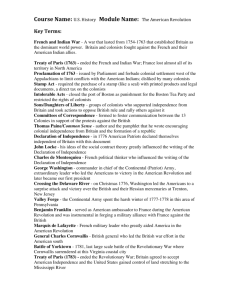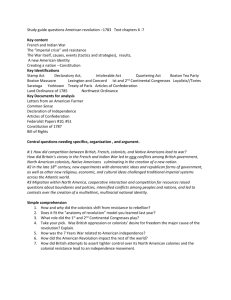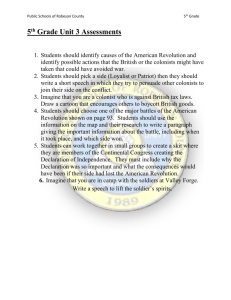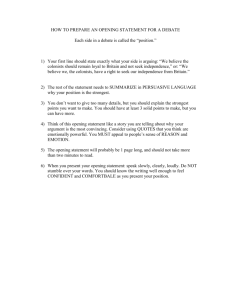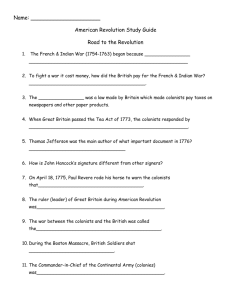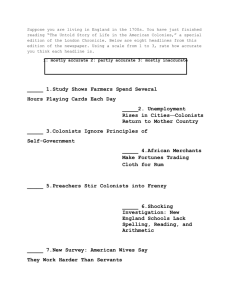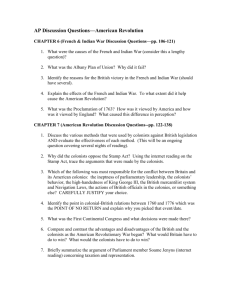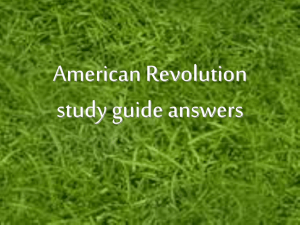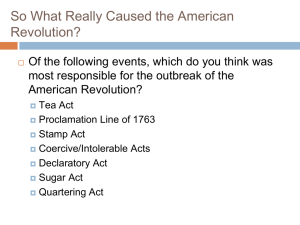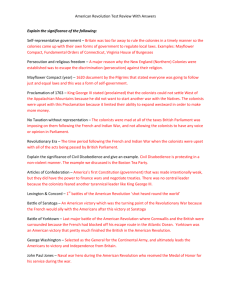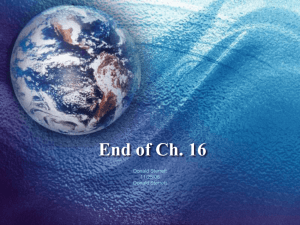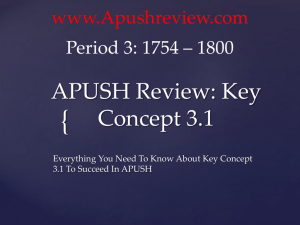American Revolution: Tea, Taxes, & Independence Notes
advertisement
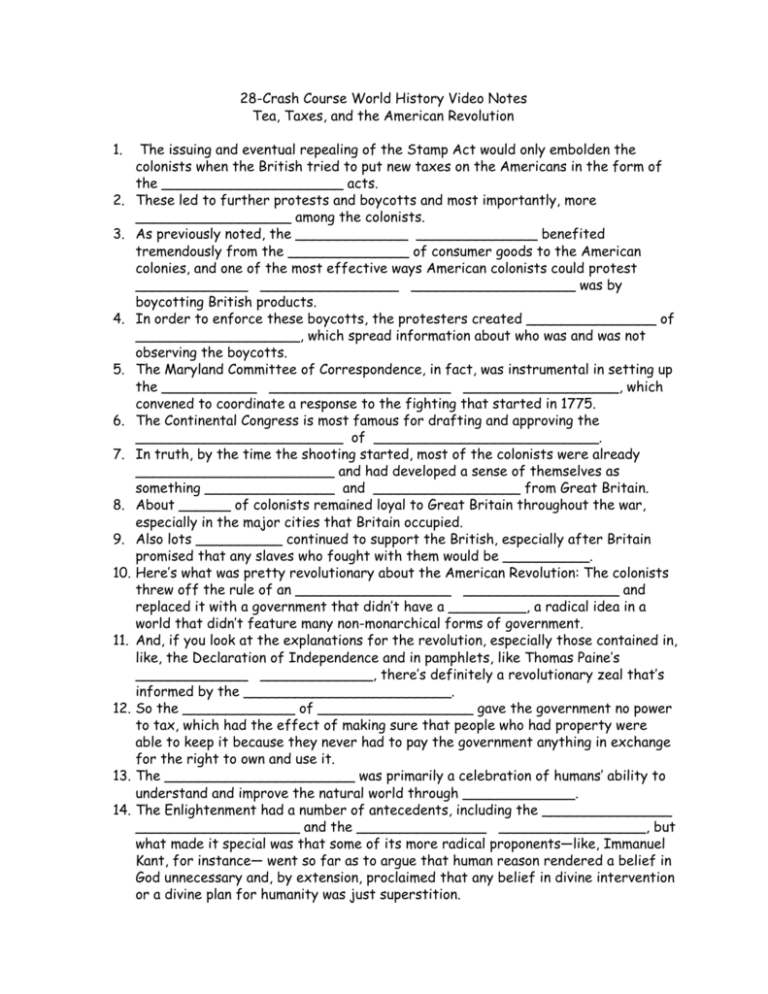
1. 2. 3. 4. 5. 6. 7. 8. 9. 10. 11. 12. 13. 14. 28-Crash Course World History Video Notes Tea, Taxes, and the American Revolution The issuing and eventual repealing of the Stamp Act would only embolden the colonists when the British tried to put new taxes on the Americans in the form of the _____________________ acts. These led to further protests and boycotts and most importantly, more __________________ among the colonists. As previously noted, the _____________ ______________ benefited tremendously from the ______________ of consumer goods to the American colonies, and one of the most effective ways American colonists could protest _____________ ________________ ___________________ was by boycotting British products. In order to enforce these boycotts, the protesters created _______________ of ___________________, which spread information about who was and was not observing the boycotts. The Maryland Committee of Correspondence, in fact, was instrumental in setting up the ___________ _____________________ __________________, which convened to coordinate a response to the fighting that started in 1775. The Continental Congress is most famous for drafting and approving the ________________________ of __________________________. In truth, by the time the shooting started, most of the colonists were already _______________________ and had developed a sense of themselves as something _______________ and _________________ from Great Britain. About ______ of colonists remained loyal to Great Britain throughout the war, especially in the major cities that Britain occupied. Also lots __________ continued to support the British, especially after Britain promised that any slaves who fought with them would be __________. Here‛s what was pretty revolutionary about the American Revolution: The colonists threw off the rule of an __________________ __________________ and replaced it with a government that didn‛t have a _________, a radical idea in a world that didn‛t feature many non-monarchical forms of government. And, if you look at the explanations for the revolution, especially those contained in, like, the Declaration of Independence and in pamphlets, like Thomas Paine‛s _____________ _____________, there‛s definitely a revolutionary zeal that‛s informed by the ________________________. So the _____________ of __________________ gave the government no power to tax, which had the effect of making sure that people who had property were able to keep it because they never had to pay the government anything in exchange for the right to own and use it. The ______________________ was primarily a celebration of humans‛ ability to understand and improve the natural world through _____________. The Enlightenment had a number of antecedents, including the _______________ ___________________ and the _______________ _________________, but what made it special was that some of its more radical proponents—like, Immanuel Kant, for instance— went so far as to argue that human reason rendered a belief in God unnecessary and, by extension, proclaimed that any belief in divine intervention or a divine plan for humanity was just superstition. 15. Like __________ __________, a major Enlightenment thinker, formulated his version of inalienable rights as life, liberty, and property. 16. America made sure that there would never be a formal ____________, and, it recognized the equal rights of ______________ and _____________, when it came to inheriting and possessing property. 17. But, the real seismic change was that after the Revolution, Americans came to view themselves as _____________ to each other. 18. And in the end, the ideas of the American Revolution— ideas about ________________ and _________________ and _______________— are still hugely important in shaping political discourse around the world, and particularly in America.
